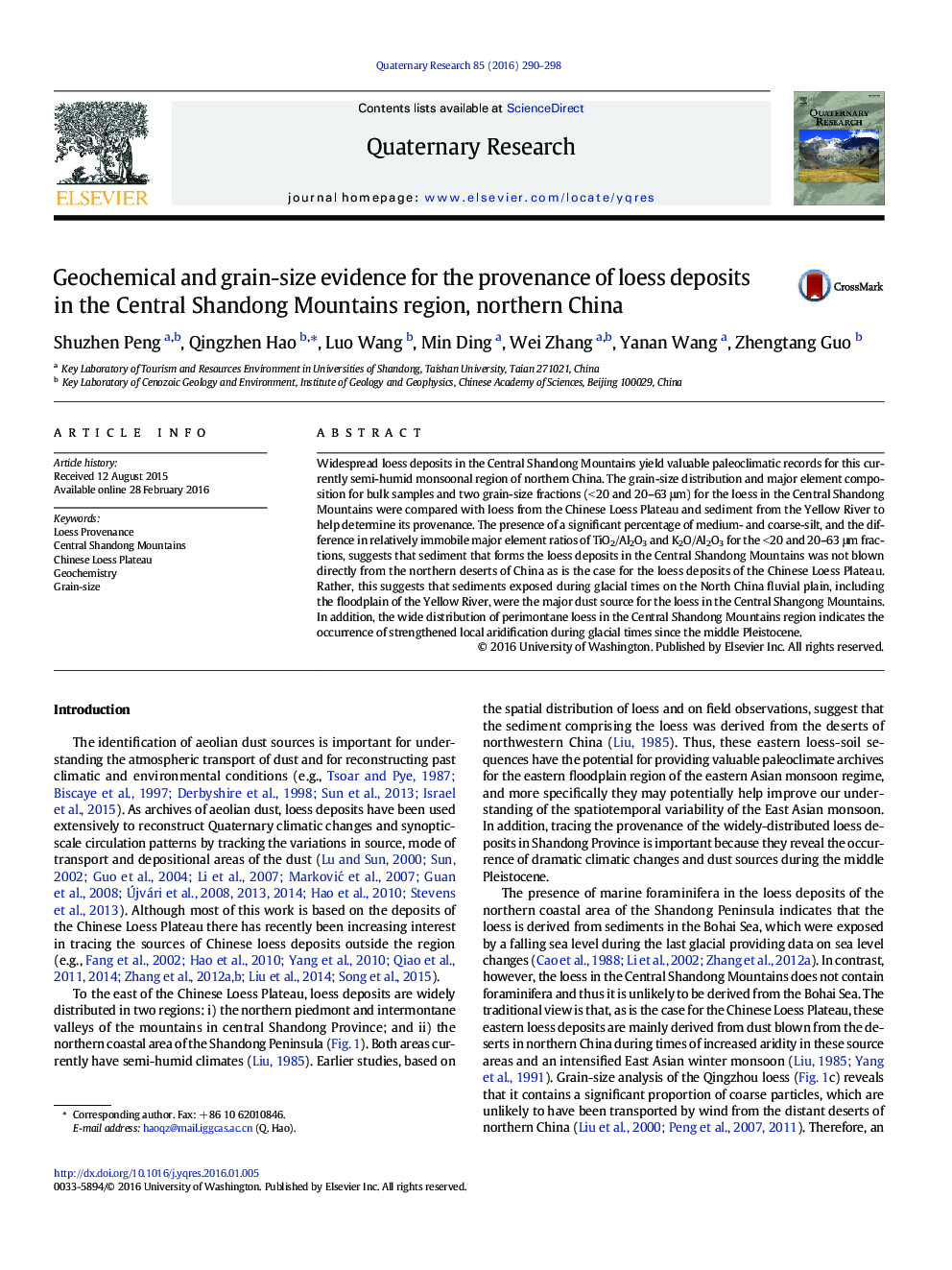| Article ID | Journal | Published Year | Pages | File Type |
|---|---|---|---|---|
| 1045066 | Quaternary Research | 2016 | 9 Pages |
Widespread loess deposits in the Central Shandong Mountains yield valuable paleoclimatic records for this currently semi-humid monsoonal region of northern China. The grain-size distribution and major element composition for bulk samples and two grain-size fractions (< 20 and 20–63 μm) for the loess in the Central Shandong Mountains were compared with loess from the Chinese Loess Plateau and sediment from the Yellow River to help determine its provenance. The presence of a significant percentage of medium- and coarse-silt, and the difference in relatively immobile major element ratios of TiO2/Al2O3 and K2O/Al2O3 for the < 20 and 20–63 μm fractions, suggests that sediment that forms the loess deposits in the Central Shandong Mountains was not blown directly from the northern deserts of China as is the case for the loess deposits of the Chinese Loess Plateau. Rather, this suggests that sediments exposed during glacial times on the North China fluvial plain, including the floodplain of the Yellow River, were the major dust source for the loess in the Central Shangong Mountains. In addition, the wide distribution of perimontane loess in the Central Shandong Mountains region indicates the occurrence of strengthened local aridification during glacial times since the middle Pleistocene.
